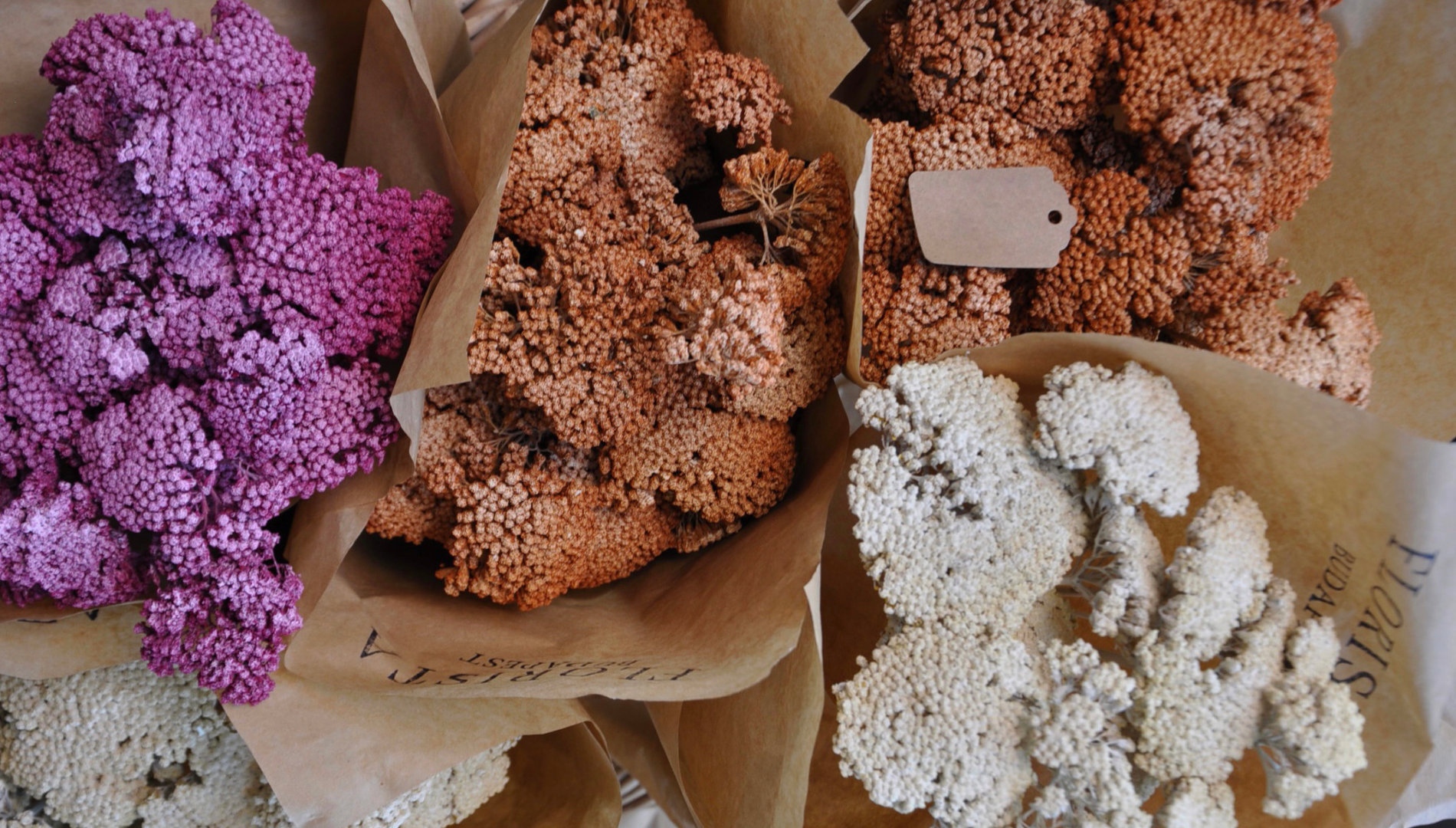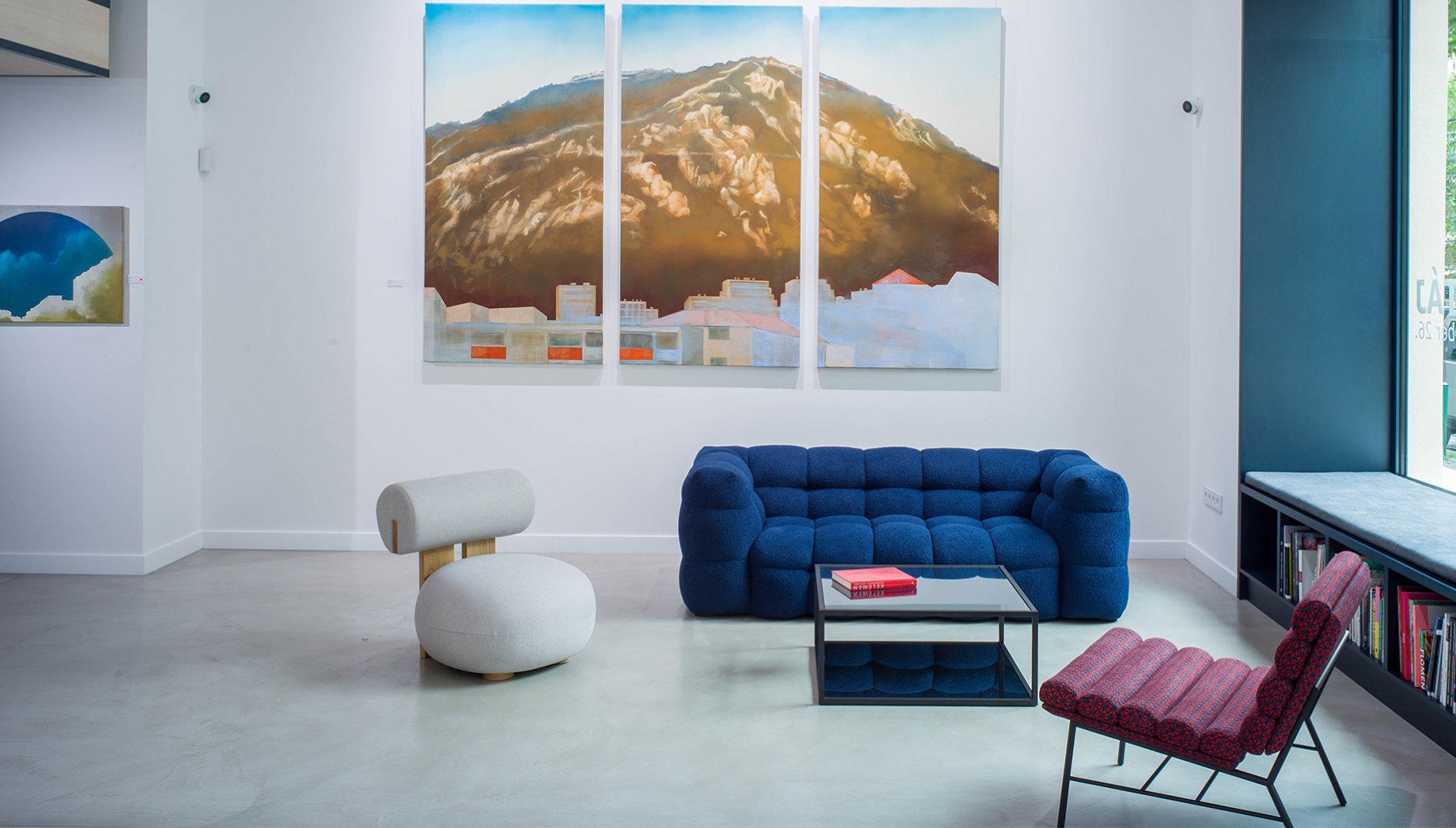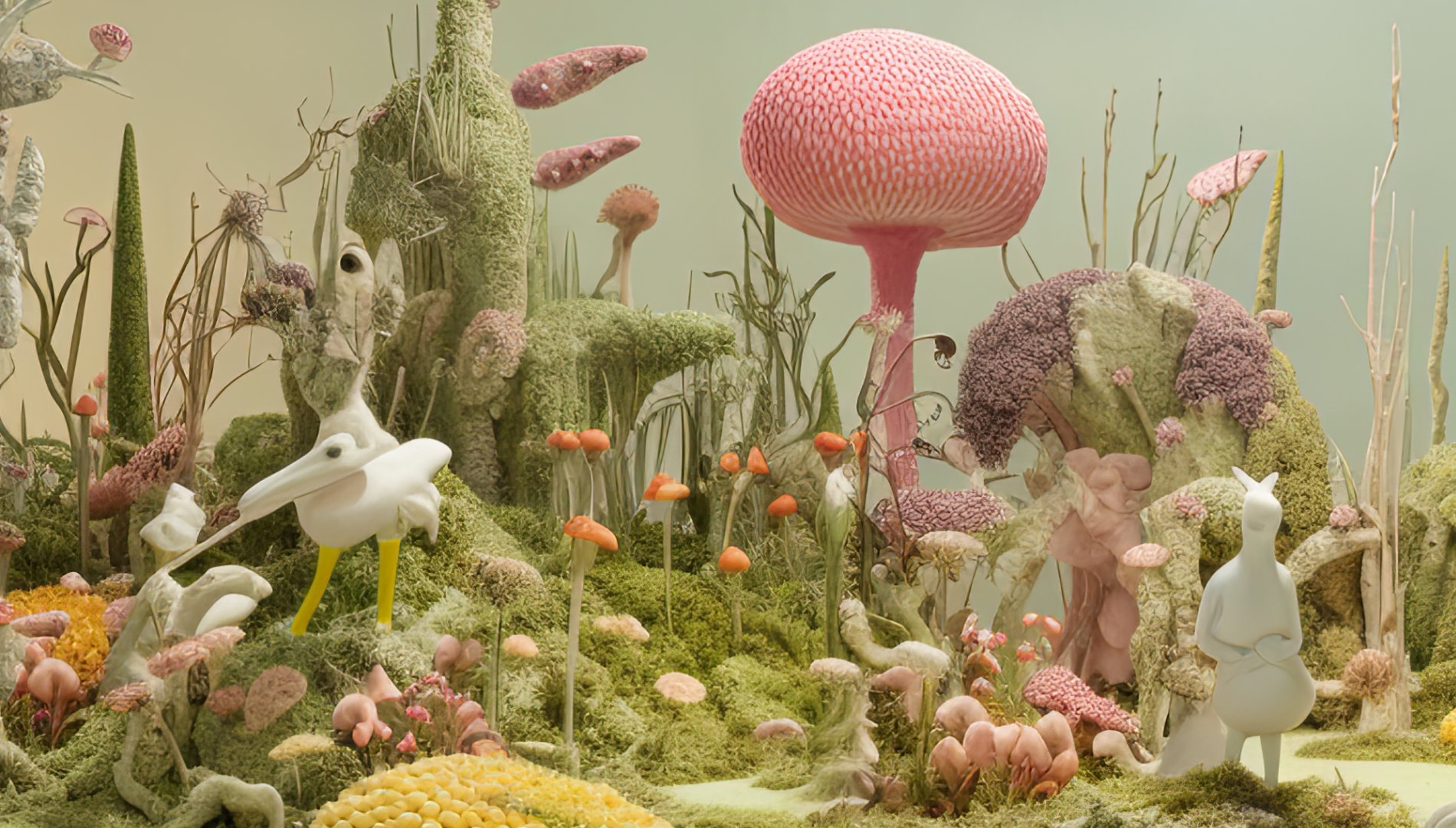
How does artificial intelligence shape interiors?
One of the winners of this year’s Flower Power design competition, freeform presents a special concept. The dreamlike installation is based around a wallpaper they created with the help of artificial intelligence in collaboration with artist Dávid Szauder, a unique, genre-creating application of the technology that is so popular today.
The freeform collective of designers Eszter Bolgár and Tímea Csitári is a fresh formation that grew out of an old friendship. Their winning concept, DREAM COME TRUE, was inspired by the work of Dávid Szauder, a Hungarian media artist based in Berlin. Dávid’s work has been shown at the most prestigious art festivals and has been featured in galleries, museums, online spaces, on the front page of the Washington Post special, billboards and building walls. His unique light mobile, the Light Modulator, inspired by Moholy, can be seen at the Light Art Museum in Budapest. His attention has turned to artificial intelligence (AI) in recent years. Thanks to his tireless imagination, he produces visual content using AI on a daily basis. His digital graphics are astonishing, dreamlike, yet hyper-realistic. Their shared concept was born from childhood memories and relevant issues.
How can artificial intelligence be applied to interior design? What will an artwork look like in the future when placed in an interior?
In our interview with freeform and Dávid Szauder, we look at these topics, the applications, opportunities and conditions for artificial intelligence (AI), discuss collaboration, NFTs, exciting initiatives and future plans. Join us!
How was the cooperation born?
Freeform: We met during our studies, then briefly parted ways, and then intertwined again. With freeform, we created a collaborative formation, one of the aims and motivations of which is to work with versatile and like-minded creatives. It has been a dream of ours to participate in S/ALON BUDAPEST, and this year we decided to go for it.
We studied art history together with David, a couple of years later, we found ourselves in the same circle again. We were deeply interested in what he was doing: besides enjoying his art, we were also interested in the role AI could play in design. We saw themes appearing in David’s work that resonated with the Flower Power call for entries, so we started thinking together.
What should we know about the concept?
Freeform: Our DREAM COME TRUE concept was inspired by David’s artificial intelligence-generated porcelain sculptures. David recently inventoried his grandmother’s estate. That’s when he got his hands on the figurines he could only look at but not touch as a child. The same experience is familiar to us from our childhood, and probably to many of our peers brought up in a bourgeois environment.
It is a dream come true: to touch as adults what was forbidden as children.
When the plan was completed, the "dream come true" took on a new meaning. Dreams are always figurative, but somehow the visual content is eroded when we try to tell them. It’s as if AI has given our conceptual world back this hard-to-verbalize ability.
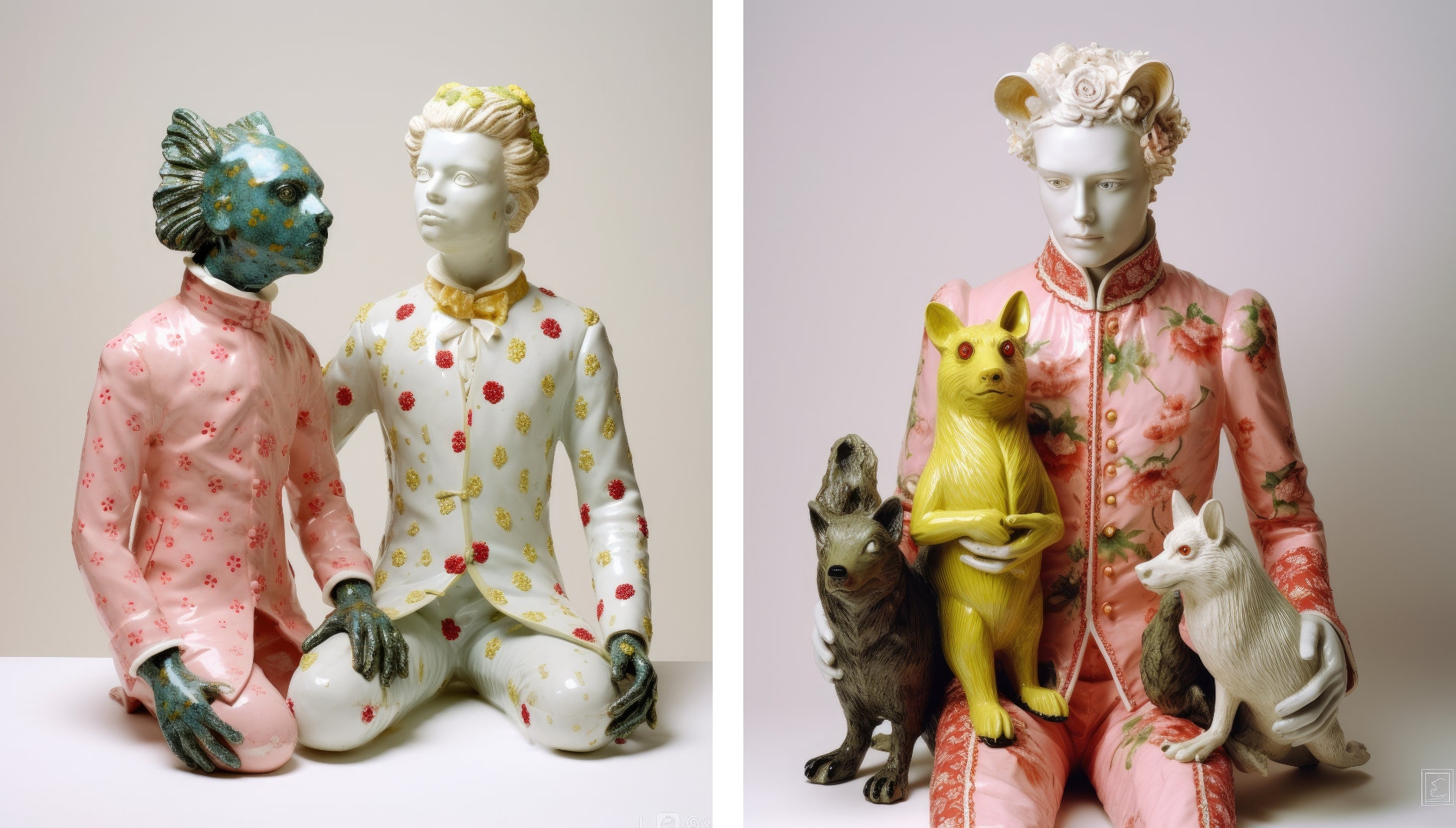
The artwork has been turned into a wallpaper without repetition, around which we organize the installation. The 3.5m by 9m wallpaper is produced by Tecnografica as a sponsorship. We have worked with the brand several times before, they are fast and highly professional. If someone falls in love with it, we’re happy to help iterate it to their unique situation or help coordinate with the manufacturer.
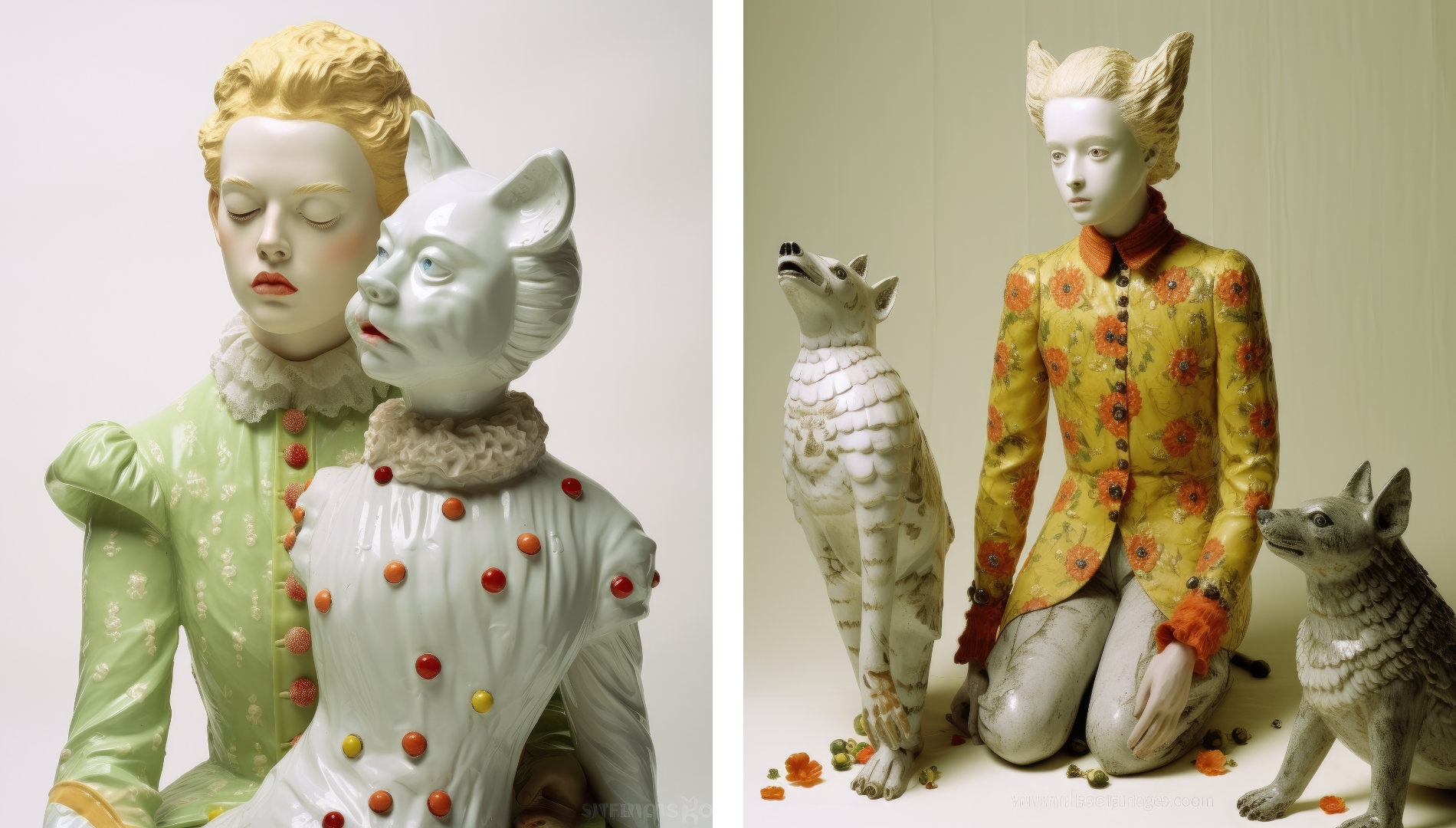
What role does artificial intelligence (AI) play in your life?
Dávid: I have been working with AI for a year and a half. One field is represented by the plethora of my art projects, which I give insight into on social media platforms. I also do a lot of work on the analytical side of the topic, giving talks and workshops. For example, Viki Szabó and I are starting a course at MOME on how to tell a story with AI.
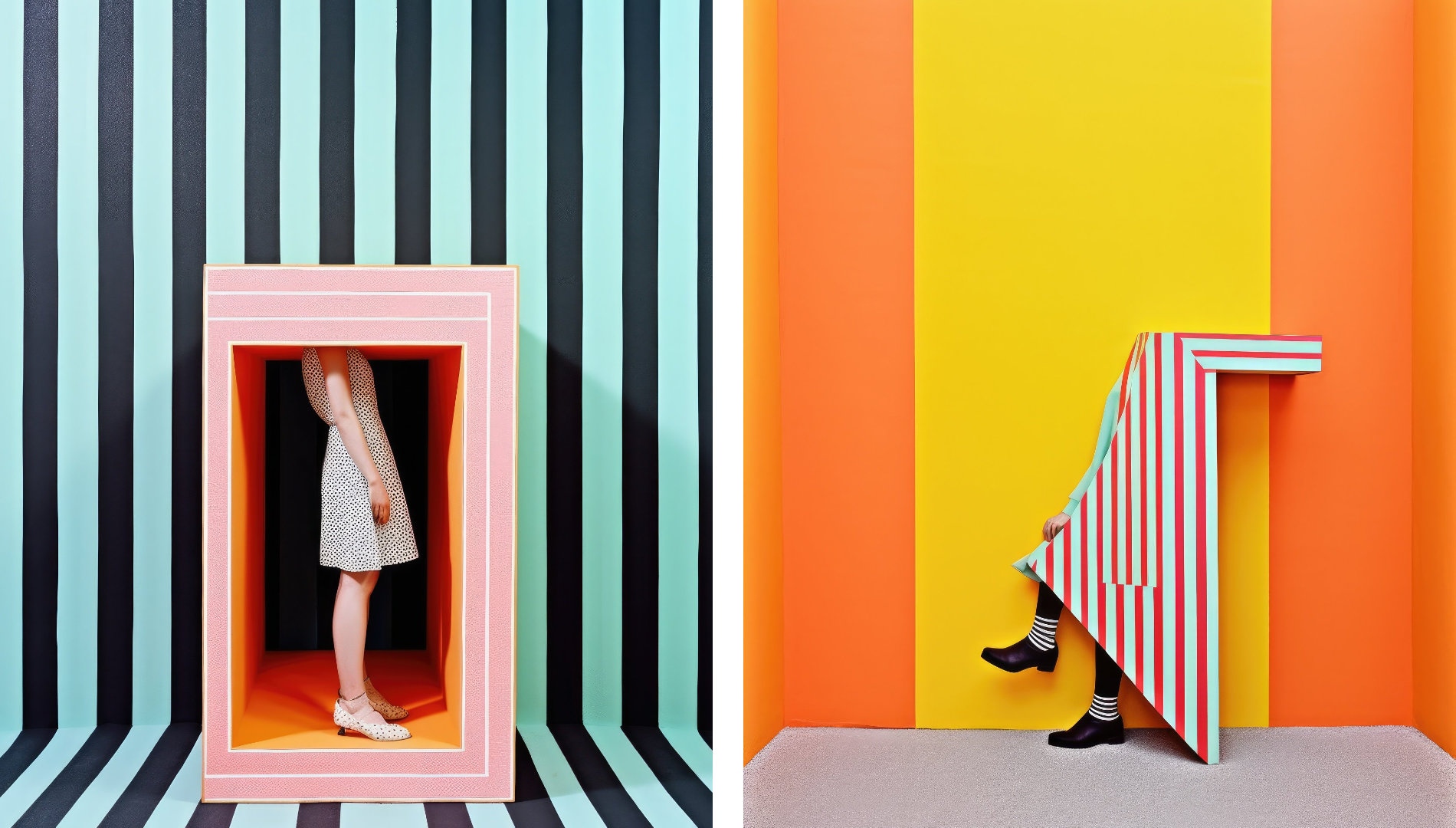
AI can create an amazingly serious simulation, which can be present in all genres, from fine arts to fashion, design and so on. It is already playing a dominant role in architecture, and architects are benefiting greatly from its use. Many fashion designers are using the technology to create specific models, patterns, samples and reference images. And there’s design and interior design. These imaging systems that I use have 1.5 trillion of up-trained imagery, which includes imagery of the entire history of design.
There was the idea that if you can create simulations at this level, sooner or later there will come a moment when digital art will have to step out into physical reality. After all, what use do we really see if we are not able to carry it forward?
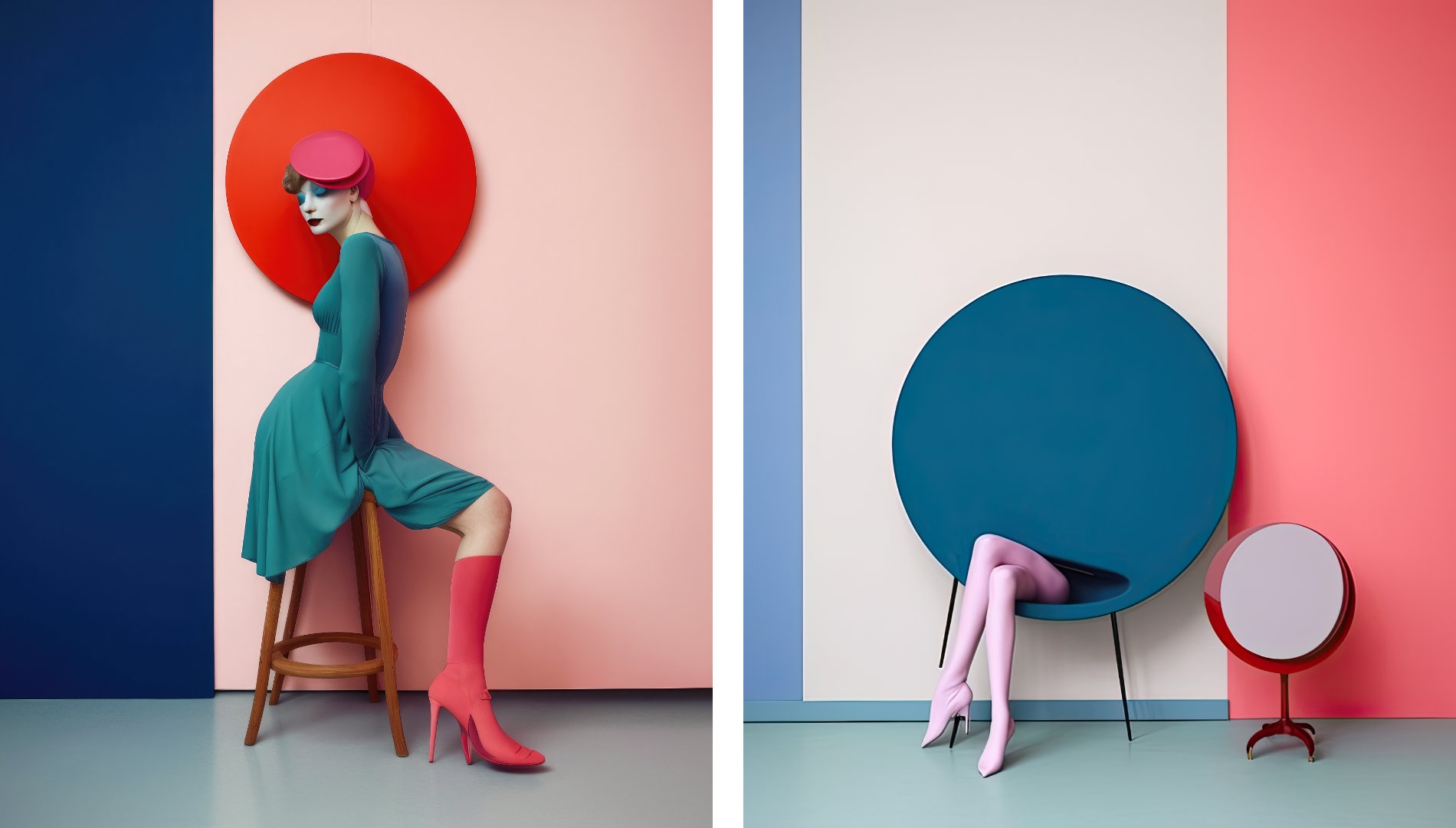
How does S/ALON BUDAPEST relate to this and what can visitors expect?
Dávid: In this respect, S/ALON BUDAPEST is a very serious playground. When visitors see the output of this, as it manifests itself visually, they will feel that this is not a conventional interior model, traditionally furnished and formulated, but a completely different approach. Until now, not much has been done with AI to create a wallpaper.
We all sense that this technology will be a significant part of our lives in the years to come. I don’t know anything about interior design, but it’s good to have two people with that kind of eye on the application.
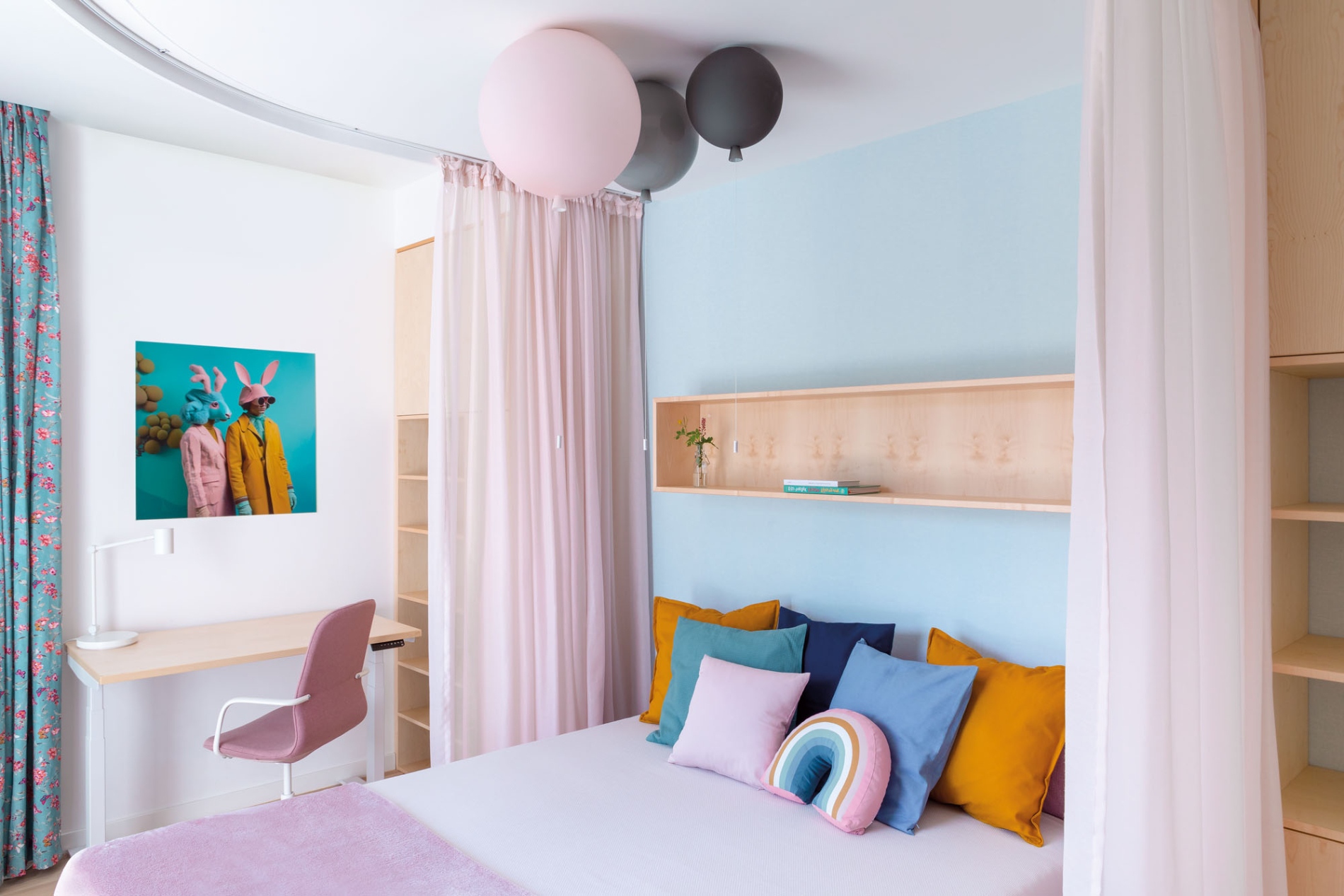
Freeform: there are always current trends that we follow, love and apply to our commissions. But a presentation like S/ALON BUDAPEST also offers a platform for extended content. This way, we don’t go with the trends, but showcase a new, unusual and atypical approach. For example, it’s not necessarily trendy right now to have antiques or Rococo appearing in the space, but that’s not our aim: rather to raise questions.
How can you revive and reimagine an old style? How to create a new unity with one’s knowledge of history? What will an artwork look like in the future when placed in an interior?
Accordingly, the installation also relates to sustainability in an abstract approach, not in an environmental sense, but rather in an intellectual sense. The reuse of older contemporary styles is an intentional element of the concept, and AI itself works with the embedded art historical heritage.
Partly thanks to this, Nagyházi Gallery joined our sponsors, and on the contemporary side we selected more timeless furniture from KARE and Desidea, such as Kartell Ghost’s transparent plexiglass rococo chair. We’ve worked with Interface’s rubber flooring on a number of previous office design projects, which provides a completely neutral backdrop, so we’ve gone for it again. Life is color - also the brand of our Krea classmate Anita Farkas - provides the table and plant decorations. In the space, we also put an emphasis on fine art and contemporary artwork: in addition to the wallpaper, Dávid’s other artworks and original digital graphics will be displayed on a giant projector in a picture frame.
Besides the visual arts, what are the applications of artificial intelligence?
Dávid: Nobody should think that you can make a living from digital art alone, applied art is the source of livelihood. For example, at the AI Summit Conference, I was not only a speaker, but I was also responsible for the identity design. Last year, I designed a cover for the Washington Post, and I’ve worked on applied graphic design for several companies. More and more people are realizing the potential of AI and its scalability: you can create and cover at unimaginable scales, you can manage it in complex ways. That’s why more and more people are asking for interior decoration reimaginings, for example in nightclubs and office buildings.
In one leap into the future, we will reach the next stage of planning and design, where we will be able to export 3D objects using artificial intelligence. This means, as many people have been saying, that the work of 3D modelers will disappear. However, we will be able to produce reference files that will allow us to move beyond the "cold work" part of the creative process, leaving more capacity for detailing and creative work in general.
We will be able to formulate certain situations more freely, which will make a significant difference to design and interior design.
Freeform: We interior designers think in a much more exact way than an artist. We always have to design for a specific space, medium and scale. AI has so far found it very difficult to follow such direct requests, which is something we struggled with when finalizing our installation. Although it doesn’t show in the final result, we had to deviate from our initial designs in order to make the design work in the given build. Designing objects and spaces using AI requires a significantly more flexible approach than, for example, 3D modeling. However, this is also the beauty of it, as the power of chance comes in.
It’s not all the same who have the AI in their hands.
Not everyone will be able to design patterns, objects, wallpapers that are relevant to contemporary object culture. This requires the knowledge, vision, sensitivity and preparation that David, for example, has as a fine artist with a solid knowledge of art history, or, depending on the application, technical and interior design skills.
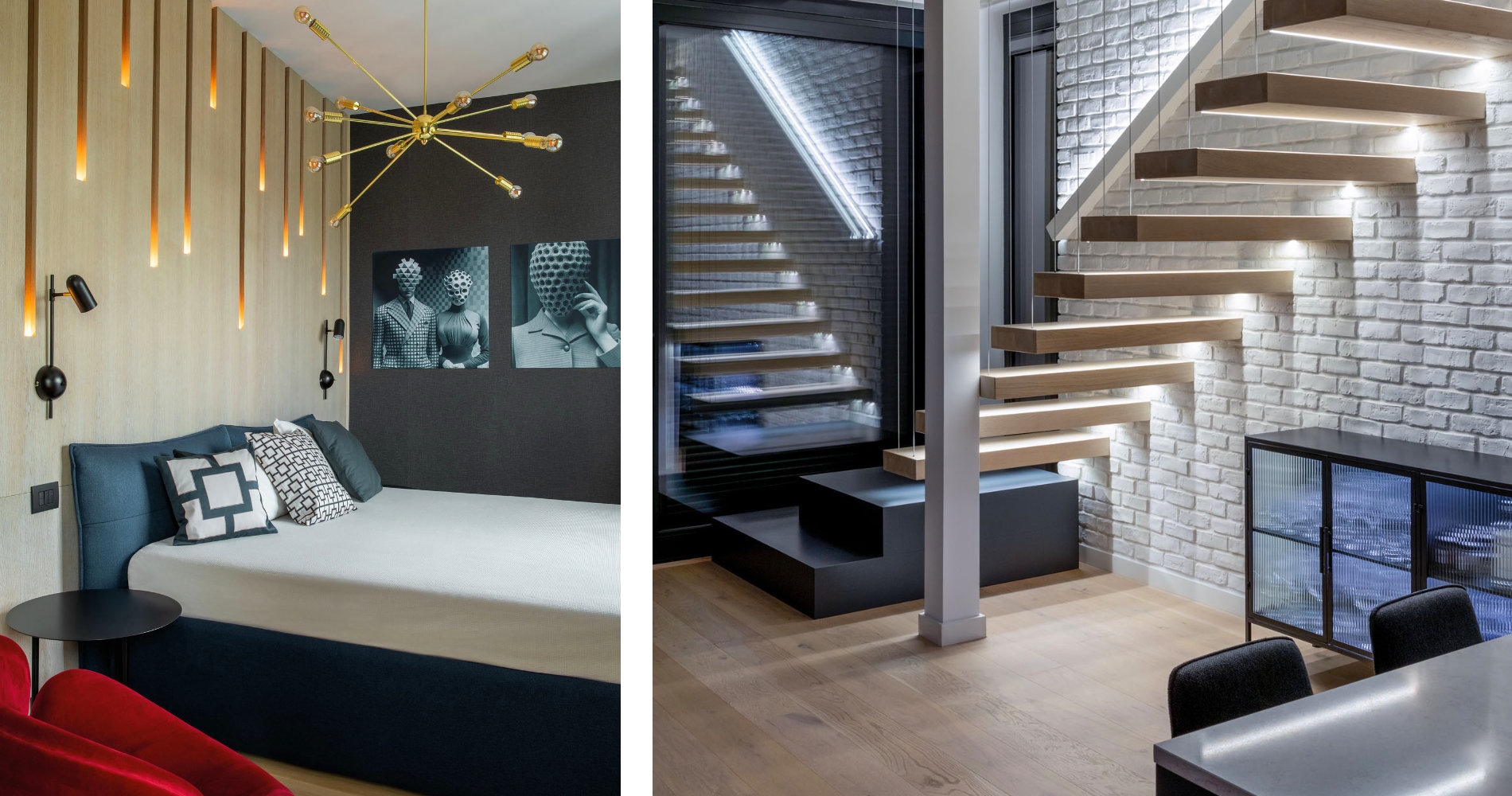
David: With AI, we can create simulations that can get the customer on the road and speed up the process. It’s a great technology for the very first phase, because we can show a tangible, intuitive moodboard almost immediately.
Freeform: However, it will not replace detailed visual designs. We can show textures, moods, space concepts, which is extremely useful, as the client most often understands the intent best from photorealistic materials.
Think of it more as a tool to help refine and chisel the moodboard.
How is the current AI mania different from the recent digital craze, the NFT hype?
Dávid: The central question about NFTs is how does a digital artist get by today? To this, NFT has brought an alternative, which has many of those who have been involved in digital art for years enthusiastic, and rightly so. Initially, it was encouraging, think of the 2021 Christie’s auction where Beeple sold his work for nearly $70 million, making him one of the three "most valuable" living artists. Why it fell short is a long shot, and best left to speculation. What is certain is that the emergence of works such as the drawn monkeys did not do the genre any favors, and did not represent the quality we expect from a curated work of art. Presumably there was no secure economic backing behind it to make NFT as a format sustainable. That said, it is still going strong, and there are enquiries, but I myself am not involved with it much any more.
What interests you most these days?
Dávid: Now, what interests me the most, and we have made an attempt, is to bring AI creations into the physical space and art institutions. These are cleaned digital works printed on premium quality photo archive paper with giclée printing technique, laminated on aluminum dibond. This gives the digital image the highest possible quality conditions to emerge into physical reality. While a digital screen is a translucent device, a tangible wall-mounted image can be viewed from multiple distances and angles, creating an intimate connection. At the moment, I would like to take my work with digital art in this direction, but it is not compatible with the NFT vision.
How, with what expectations should we welcome the rise of artificial intelligence?
Dávid: The most important feature of technology is that we do not decide whether it is with us. It is becoming a part of our lives thanks to immense investments by large corporations. As digital artists, one of our tasks is to explore the possibilities, to follow what is happening in the world of technology and to understand how we can connect to it.
As digital artists, we need to keep up with technological developments.
Freeform: It doesn’t meet our technical needs yet, but it gives us a different experience, and there is an amazing parallelism with dreaming. It is as if these digital creations are emerging from our collective unconscious.
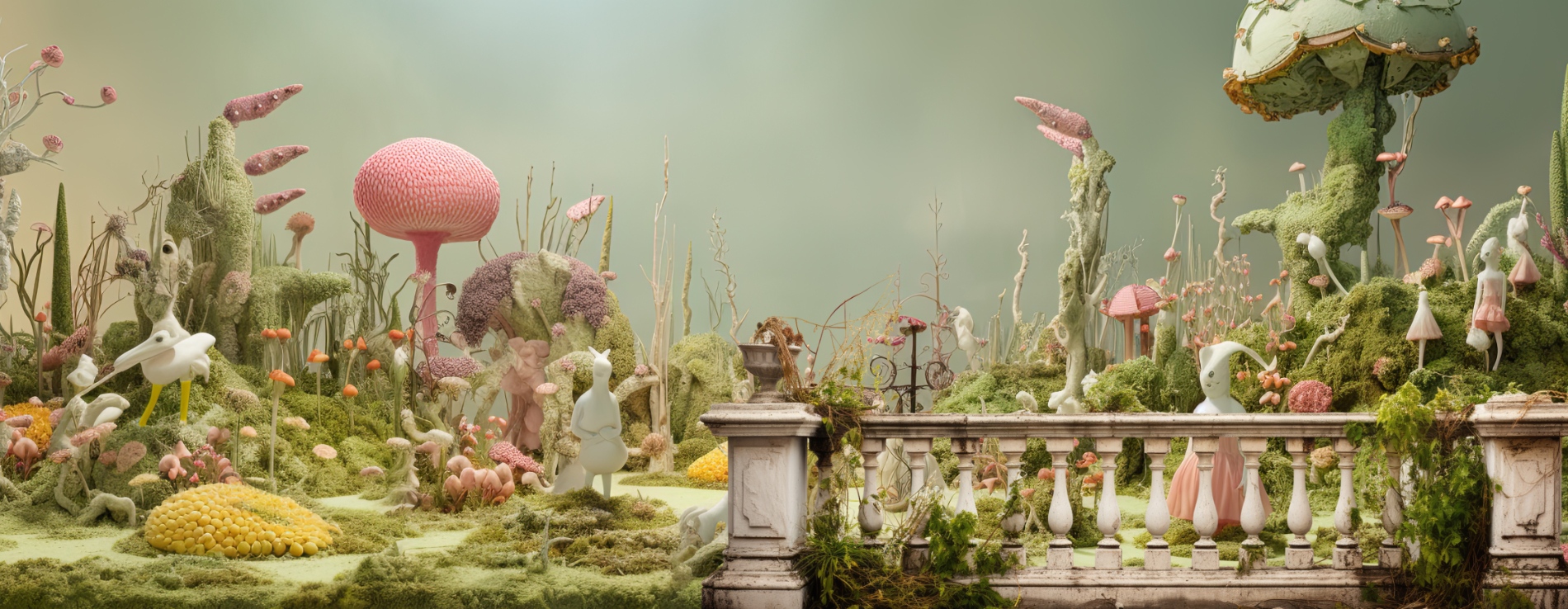
As an interior designer, you work with well-defined concepts and numbers, and AI can bring a fascinating abstraction to this pragmatic medium. I’m happy to get on this train and ride it.
What impact does technology have on our lives?
Freeform: Nowadays, visual stimuli have taken precedence over linguistic content, written language and verbality have become marginal compared to what we get in the image dump. In AI, I see an opportunity to bring linguistics and precise expression to the fore, to bring poetry back to the forefront, as we create works based on language.
It is a very interesting cohesion of visuality and linguistic thinking. It is a synthesis, in fact.
This is where the wheat and the chaff will be separated - literacy, sophistication and complex thinking without clichés will be decisive. Those who have this will be able to create something new. Those who lack the background and sophistication will not excel.
Dávid: This kind of AI came too soon, less than a year and a half after the NFT hype. When you have a very rapid succession of trends with significant peaks, it’s hard to turn to technologies and platforms in a way that really immerses you. We don’t live in an immersive world anyway. You can create something with one-word commands, but without attention and time, you only reach the outer shell of possibilities.
Freeform: We wonder how the audience at S/ALON BUDAPEST will react to this. If they are receptive to it, go with it. We’re also overflowing with inspiration in terms of object creation, we’re excited by the imagination of what can be done with technology. We have a 2-dimensional wallpaper, but we are also planning 3D objects as the next step. It gives us amazing possibilities.
What are you currently working on?
Freeform: We’re creating a series of programmes called Private Veszprém, which Dávid dreamed up. One of the stages of this is a temporary public sculpture project, in which we will 3D print celebrities who once lived in Veszprém. Not all of these 5 people had photos of sufficient quality from the time, so we had people dressed, scanned and printed. They should be on display in Veszprém in October.
With AI design and 3D printing, we will do revolutionary things.
Dávid: It’s a multi-level archive project with an identity created with artificial intelligence. Our aim is to present the city’s past to people in a way that when they come to Veszprém, they get something personal from it. We will restore old shop windows, give statues to people who didn’t have them, and have an open-air exhibition about families who shaped Veszprém and whose ancestors are still living in the city today.
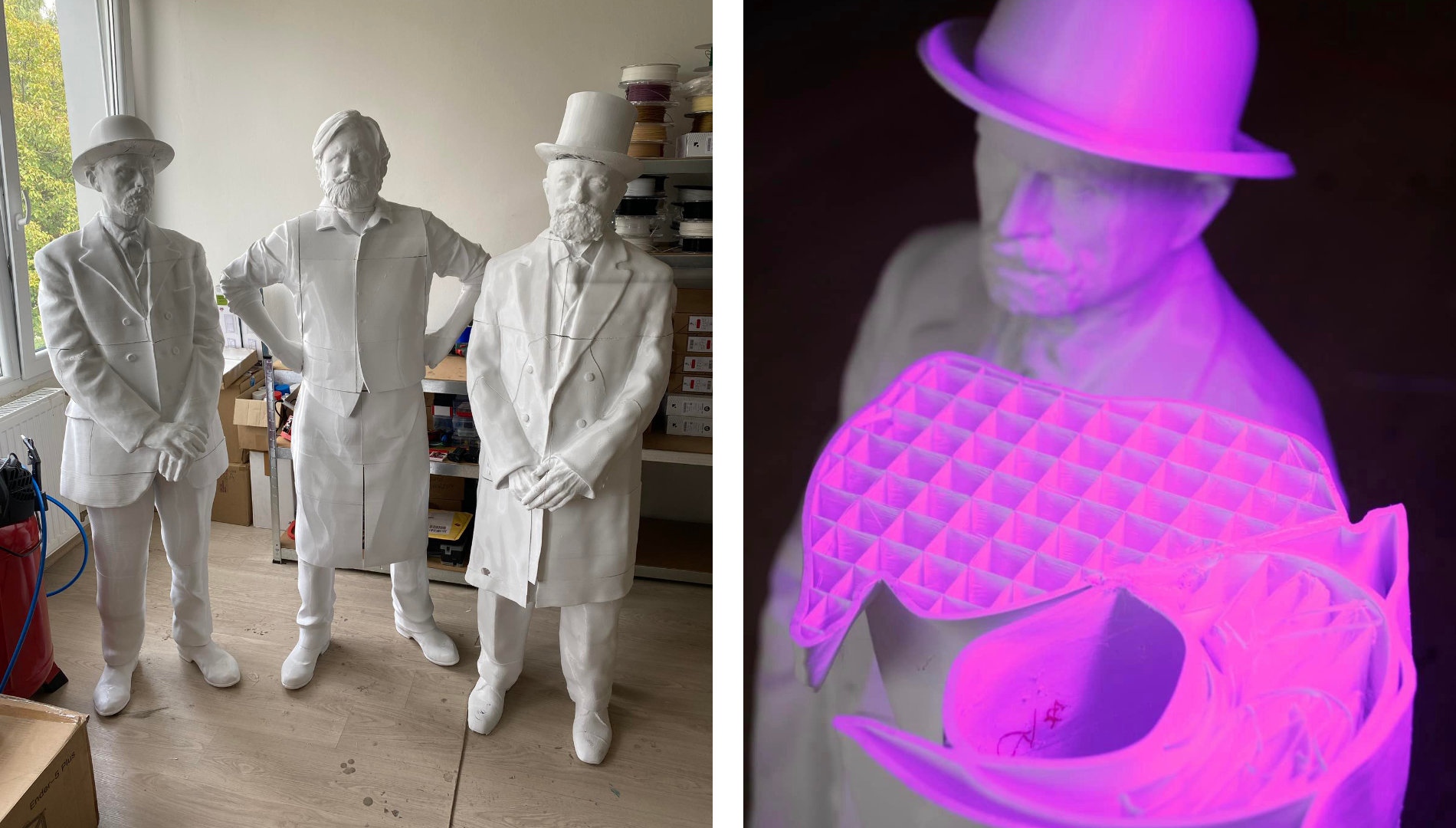
Visit S/ALON BUDAPESTRE this weekend to experience the interior design revolution in person! You can get your discounted tickets in advance until midnight on 21 September here, and stay tuned on Facebook and Instagram for more inspiring content and useful information.

